Phakding – Nestled in the heart of the Khumbu region of Nepal, Phakding serves as the first stop for trekkers embarking on the legendary Everest Base Camp trek. Situated at a moderate elevation, this picturesque village offers a glimpse into the rich cultural heritage and breathtaking landscapes that await intrepid adventurers.
In this blog post, we will delve into the key aspects of Phakding, including its elevation, distances to neighboring destinations, trekking routes, and its unique cultural identity.
Phakding Elevation
At an elevation of approximately 2,610 meters (8,560 feet), Phakding offers a mild introduction to the high-altitude environment of the Himalayas.
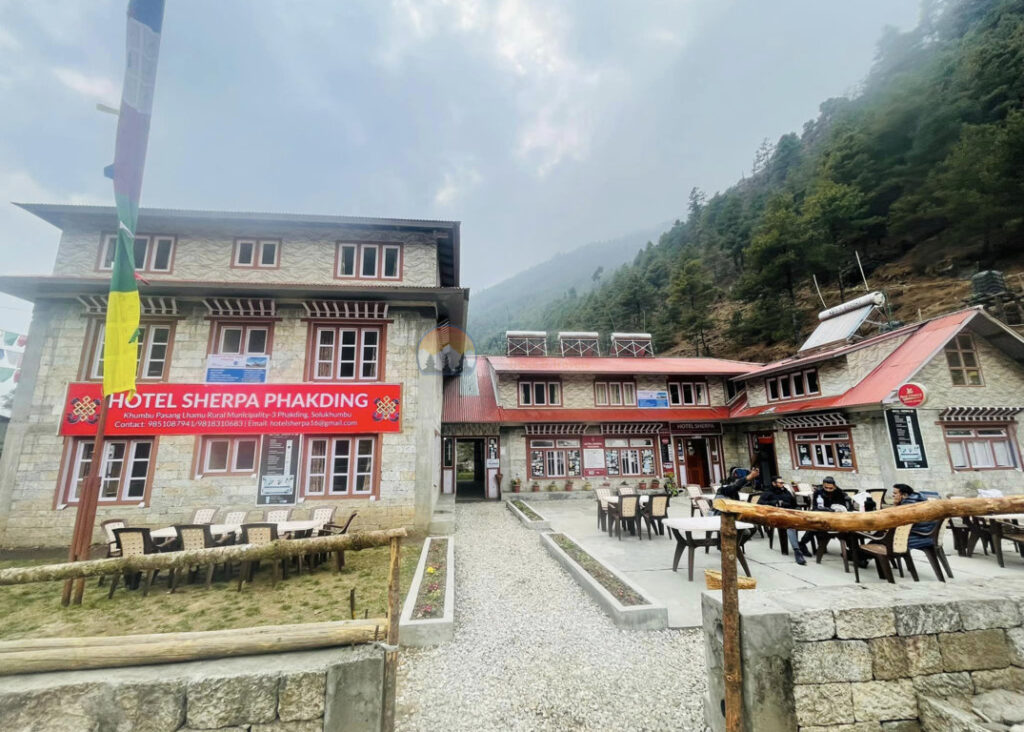
The village is located along the Dudh Kosi River, surrounded by towering peaks and lush green valleys, providing a captivating backdrop for trekkers.
Phakding to Namche Bazaar Distance and Route
The journey from Phakding to Namche Bazaar, the bustling gateway to the Everest region, spans approximately 9 kilometers (5.6 miles). This section of the trek usually takes around 6-7 hours and involves crossing suspension bridges, traversing dense forests, and ascending steep inclines.

Trekkers will pass through small settlements like Jorsalle before reaching the vibrant town of Namche Bazaar, a hub of Sherpa culture and commerce.
How to travel from Namche Bazaar to Phakding:
Start from Namche Bazaar
Namche Bazaar is a bustling town and a popular stopover for trekkers in the Everest region. To begin your journey to Phakding, make your way to the center of Namche Bazaar, where the main trailhead is located.
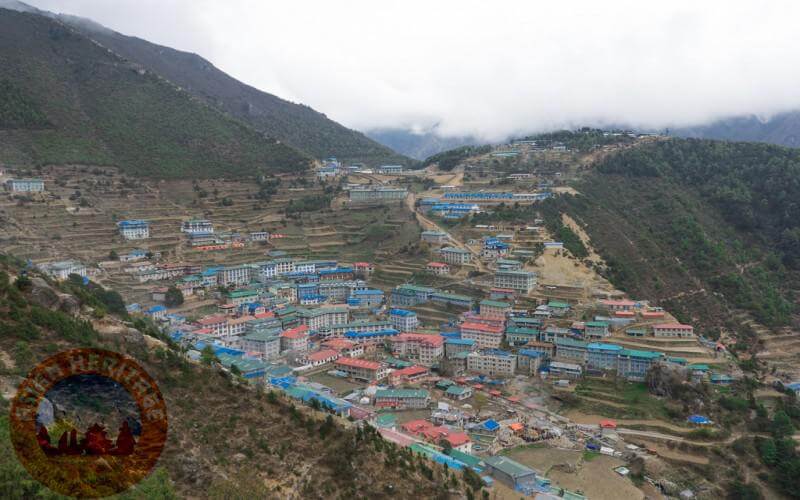
Descend from Namche Bazaar:
From Namche Bazaar, you’ll need to descend along the trail to reach Phakding. The initial part of the trek involves descending a series of stone steps and trails, so take your time and watch your footing.
Follow the Dudh Kosi River:
As you descend, the trail will lead you through lush forests and picturesque landscapes. The path closely follows the Dudh Kosi River, providing beautiful views of the river valley and surrounding mountains.
Also Read: 8 Things you need to Know about Namche Bazaar
Cross Suspension Bridges:
Along the route, you’ll encounter several iconic suspension bridges that span the river. These bridges are not only functional but also add an element of adventure to the trek. Cross these sturdy bridges one by one, taking in the awe-inspiring views of the river gorges below.

Pass-Through Small Villages:
As you continue your journey, you’ll pass through small Sherpa villages scattered along the trail. These villages, such as Jorsale and Benkar, offer glimpses into the local way of life and provide opportunities to rest and refuel at teahouses or guesthouses.

Arrive at Phakding:
After several hours of trekking, you’ll finally reach Phakding. The village is situated at an elevation of approximately 2,610 meters (8,560 feet) and serves as a popular overnight stop for trekkers on their way to Everest Base Camp or other destinations in the region.

Phakding to Lukla Distance and Route
Located around 9 kilometers (5.6 miles) northeast of Phakding, Lukla is renowned for its Tenzing-Hillary Airport, often referred to as one of the most dangerous airports in the world.
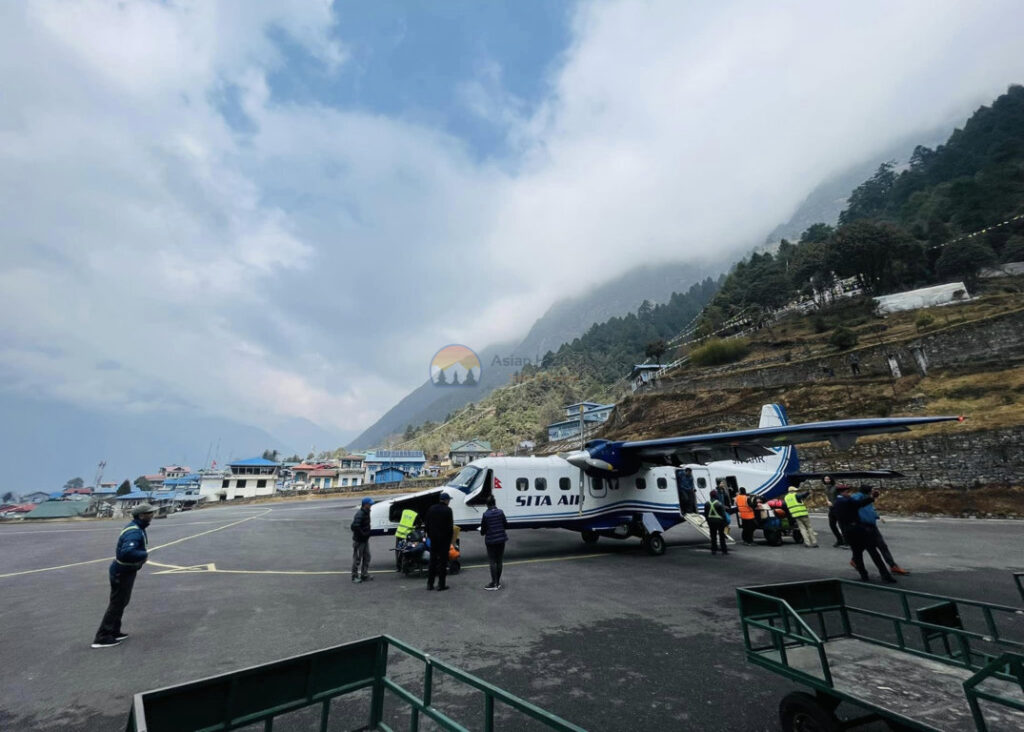
The trek from Phakding to Lukla typically takes around 3-4 hours, with trekkers enjoying scenic views of the Dudh Kosi River and terraced farmland. Lukla serves as a major transit point for trekkers and climbers heading to Everest and other Himalayan peaks.
Phakding to Monjo Distance and Route
Approximately 4 kilometers (2.5 miles) north of Phakding lies the village of Monjo, located within the Sagarmatha National Park. The trek from Phakding to Monjo takes about 2-3 hours, passing through lush rhododendron forests and crossing the Monjo River.

Here, trekkers will need to register and obtain permits for entering the national park before continuing their journey.
Phakding to Everest Base Camp Trek
Phakding acts as the starting point for the iconic Everest Base Camp trek, a bucket-list adventure for outdoor enthusiasts worldwide. The trek spans a distance of approximately 65 kilometers (40 miles) and usually takes around 12-14 days to complete.

As trekkers make their way through the Khumbu Valley, they will encounter awe-inspiring landmarks such as Tengboche Monastery, Dingboche, Lobuche, and Gorak Shep before reaching the legendary Everest Base Camp, situated at an elevation of 5,364 meters (17,598 feet).
Culture
Phakding is primarily inhabited by the Sherpa community, known for its rich cultural heritage and deep connection to the mountains. Sherpas have a long history of living in the Himalayas and have adapted to the challenging mountainous environment. Their culture is deeply rooted in Tibetan Buddhism, and their religious practices and traditions are an integral part of daily life.
Buddhism plays a significant role in Sherpa culture, and you can see its influence in the numerous monasteries, prayer flags, and mani stones that adorn the landscape of Phakding. The monasteries, such as the Phakding Monastery, serve as important spiritual centers for the community.
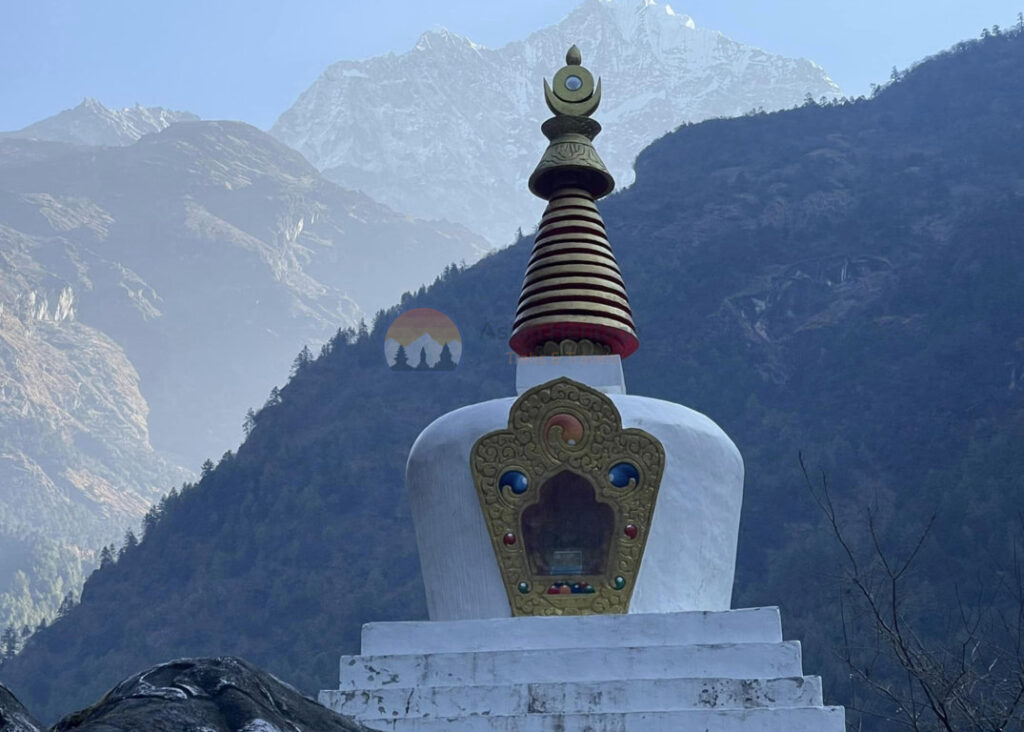
They are often adorned with intricate murals, statues of Buddhist deities, and prayer wheels. Participating in the daily rituals, observing the colorful festivals, and witnessing the serene Buddhist practices provide visitors with a deeper understanding of Sherpa culture.
The Sherpa people of Phakding are renowned for their mountaineering expertise. Many Sherpas have played a vital role in supporting mountaineering expeditions in the region, including those aiming to summit Mount Everest. Their skills, knowledge of the mountains, and resilience have made them invaluable members of expeditions, earning them global recognition and admiration.
History
Phakding and the surrounding region have a long and storied history. The Sherpa people believed to be of Tibetan origin, migrated to the Everest region several centuries ago. They established settlements in the Khumbu Valley, including Phakding, and developed a unique way of life in the challenging mountain environment.

The Sherpas were traditionally engaged in agriculture, animal husbandry, and trade along the ancient trade routes between Nepal and Tibet. Over time, with the advent of mountaineering and the growth of tourism in the region, the Sherpas began to play a significant role in supporting trekkers and climbers. The development of the Everest Base Camp trek brought Phakding into the spotlight as a starting point for the iconic journey.
You may also like: Ghandruk: Gurung Cultural Gem
Phakding’s location along the trade route between Nepal and Tibet also made it a crucial stop for traders. In the past, caravans carrying salt, wool, and other goods passed through Phakding, contributing to its cultural and economic significance.
It holds the history of Mountaineering and Exploration
The history of Phakding is intertwined with the history of mountaineering and exploration in the Everest region. Legendary figures such as Sir Edmund Hillary, Tenzing Norgay, and many other mountaineers have passed through Phakding on their journeys to conquer the world’s highest peak. Their expeditions have brought global attention to the region and have contributed to the development of infrastructure and tourism in Phakding.
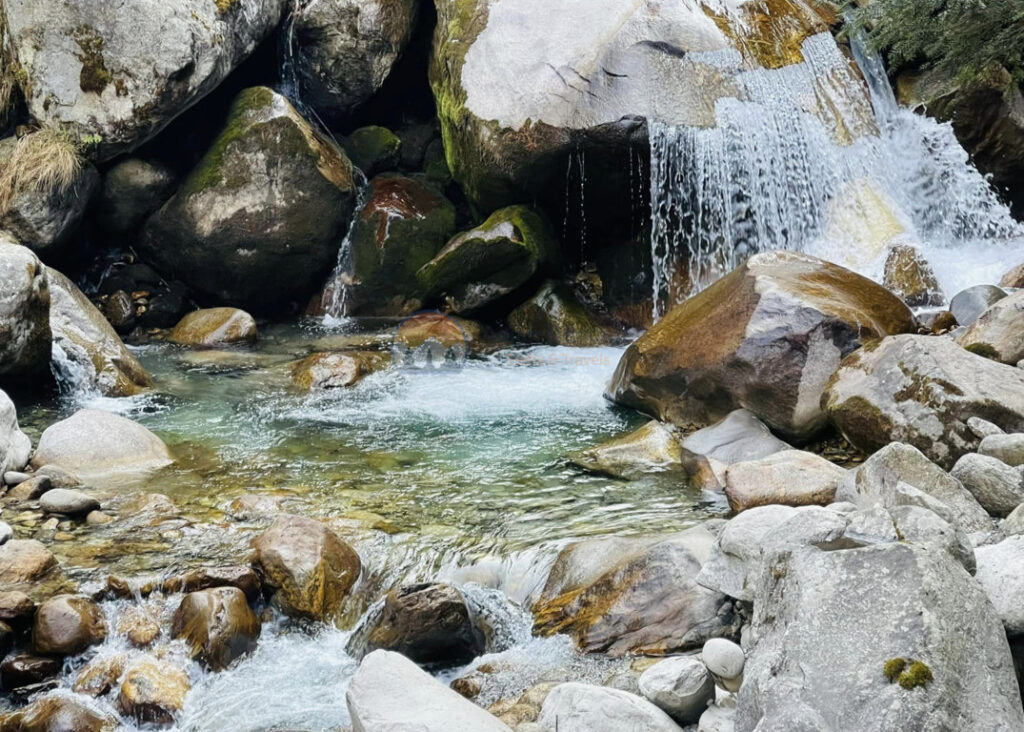
Today, Phakding serves as a testament to the Sherpa culture, its resilience, and its deep connection to the mountains. The village continues to welcome trekkers and climbers from around the world, offering them a glimpse into the unique heritage and way of life of the Sherpa people.
Phakding’s culture and history make it a fascinating destination for those seeking not only a physical adventure but also an opportunity to immerse themselves in the traditions and spirituality of the Himalayas.
Accommodations
Phakding, being a popular starting point for treks to Everest Base Camp, offers a range of accommodation options to cater to the needs of trekkers.
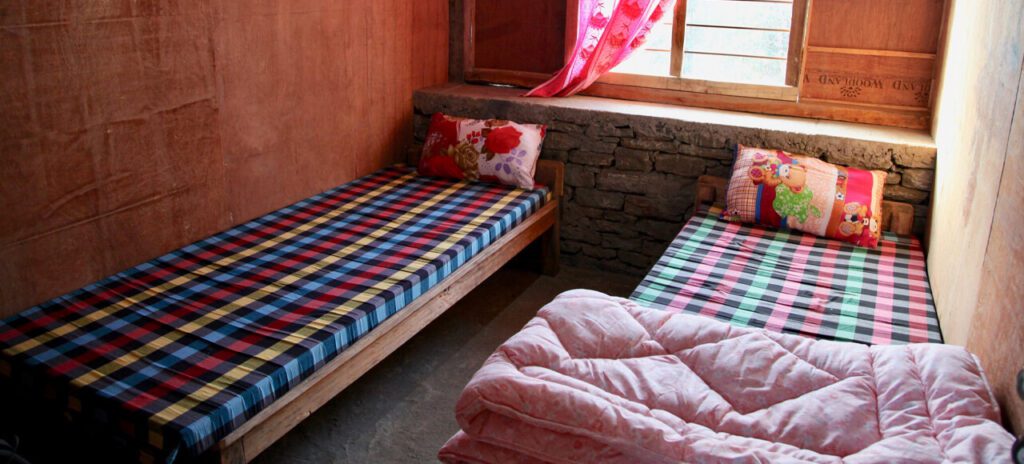
While the village is relatively small, you can find comfortable lodges, tea houses, and guesthouses that provide a welcoming and cozy environment for trekkers to rest and rejuvenate after a day of trekking. Here are some key points about accommodation in Phakding:
Tea Houses and Guesthouses:
Tea houses and guesthouses are the most common types of accommodation in Phakding. These establishments provide basic but comfortable amenities, including private or shared rooms with beds, blankets, and pillows. The facilities may vary, but most tea houses and guesthouses offer communal dining areas where trekkers can enjoy hot meals and socialize with fellow travelers.
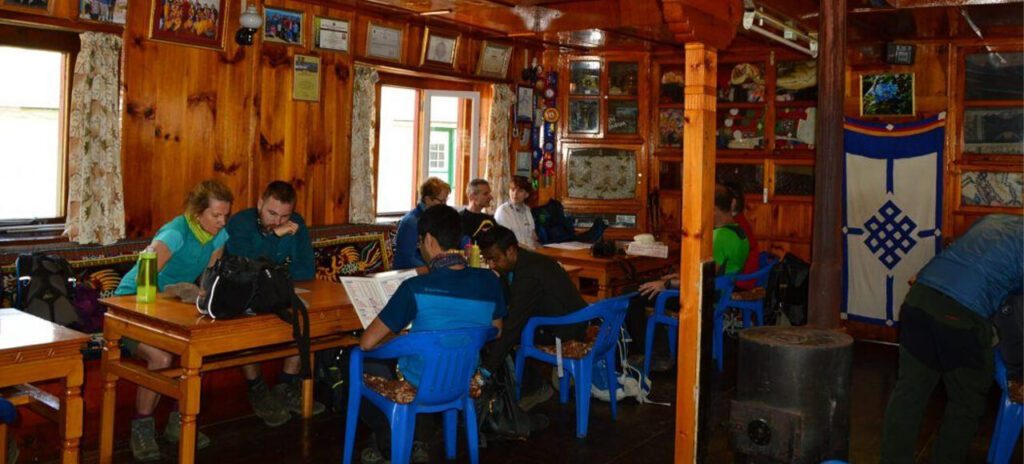
Shared Bathrooms:
In many tea houses and guesthouses, bathroom facilities are shared among guests. These typically include squat toilets and basic washing facilities with cold or lukewarm water. It’s advisable to bring your own toiletries and toilet paper, as these may not always be provided.
Electricity and Charging Facilities:
While electricity is available in Phakding, it may be limited or available only during certain hours. Charging facilities for electronic devices such as cameras, phones, and batteries are usually available for a fee. It’s a good idea to bring extra batteries or portable chargers to ensure you have enough power during your trek.
Popular: Syabrubesi: Junction of Major Trekking Route
Food and Dining:
Tea houses and guesthouses in Phakding typically offer a menu with a variety of meals, ranging from local Nepali dishes to international cuisine. Dal Bhat (rice, lentils, and vegetables) is a popular and nutritious choice for trekkers. You can also find tea, coffee, snacks, and beverages to keep you energized along the journey.
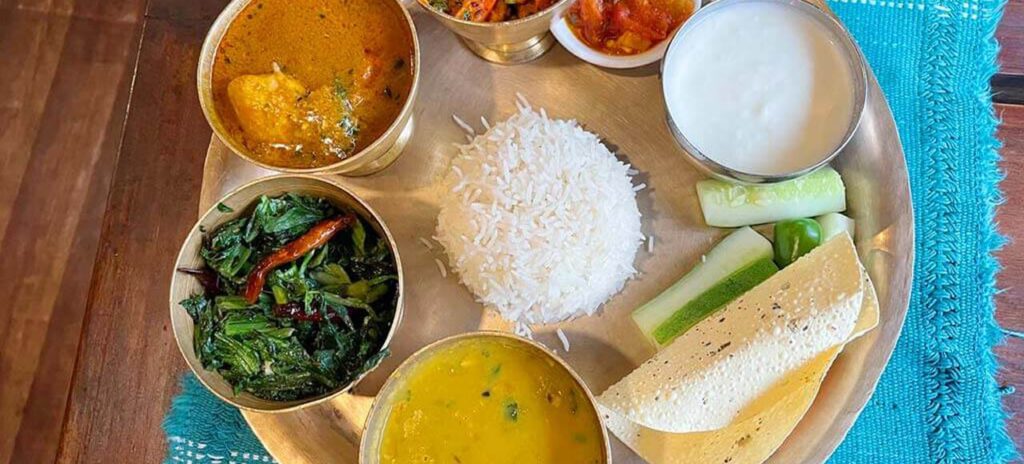
Cozy Atmosphere:
The accommodation in Phakding exudes a warm and cozy atmosphere, often adorned with Sherpa décor and traditional furnishings. After a long day of trekking, you can relax by the fireplace or in communal areas, sharing stories with fellow trekkers or engaging in board games.
Trekking Permits:
When staying in Phakding, it’s important to have the necessary permits for trekking in the Sagarmatha National Park and the Khumbu region. The tea houses and guesthouses can assist you in obtaining these permits, ensuring that you are compliant with local regulations.
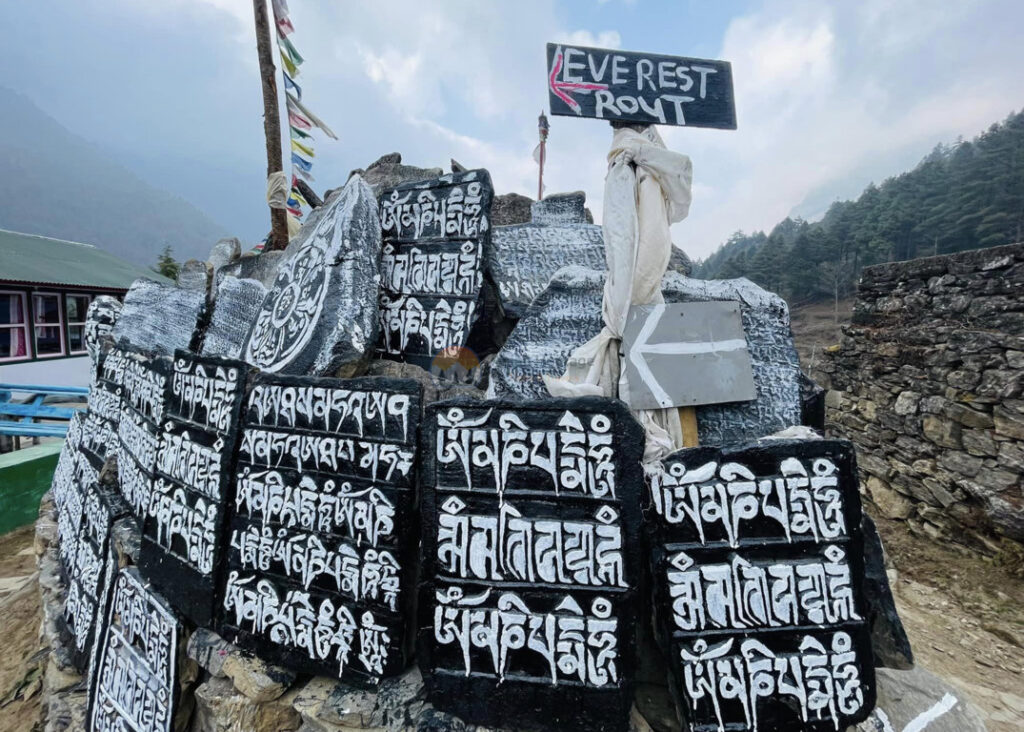
Booking in Advance:
During the peak trekking seasons, such as spring and autumn, it’s advisable to book your accommodation in Phakding in advance. This helps secure a place to stay, especially in the more popular tea houses and guesthouses.

While the accommodation in Phakding may not offer luxurious amenities, it provides a comfortable and welcoming environment for trekkers to recharge before continuing their journey. The hospitality of the locals, the communal spirit among trekkers, and the stunning surroundings make the accommodation experience in Phakding an integral part of the overall trekking adventure in the Everest region.
Highlights of Phakding
Scenic Beauty:
Nestled along the banks of the Dudh Kosi River, Phakding boasts breathtaking natural beauty. Surrounded by lush green valleys, towering peaks, and cascading waterfalls, the village provides a picturesque setting for trekkers and nature enthusiasts.

Suspension Bridges:
Phakding is known for its impressive suspension bridges that span across the river and connect different parts of the region. Crossing these bridges adds an element of adventure to the trek and offers stunning views of the river, gorges, and surrounding landscapes.

Sherpa Culture:
Phakding provides a wonderful opportunity to immerse oneself in the unique Sherpa culture. The local Sherpa community, known for its mountaineering expertise, warmly welcomes visitors and offers insights into their traditional lifestyle, customs, and beliefs.
Exploring the monasteries, witnessing prayer ceremonies, and interacting with the friendly locals are highlights of the cultural experience in Phakding.
Accommodation and Tea Houses:
Despite being a small village, Phakding offers a range of accommodation options and cozy tea houses for trekkers. After a day of trekking, resting in these comfortable lodges, enjoying local Sherpa cuisine, and bonding with fellow trekkers create memorable experiences.
Popular: Kagbeni: Untouched Mystical realm of the Himalayas
Gateway to Everest Base Camp Trek:
Phakding serves as the gateway to the iconic Everest Base Camp trek. Beginning the journey from Phakding allows trekkers to gradually acclimatize to higher altitudes and enjoy the beauty of the Khumbu region. The excitement of embarking on this legendary trek from Phakding is undoubtedly a highlight for adventure enthusiasts.
Sagarmatha National Park:
Located nearby, Sagarmatha National Park is a UNESCO World Heritage Site known for its exceptional biodiversity and stunning landscapes. Phakding offers access to the park, where trekkers can explore its diverse flora and fauna, including rhododendron forests, rare wildlife, and panoramic mountain views.
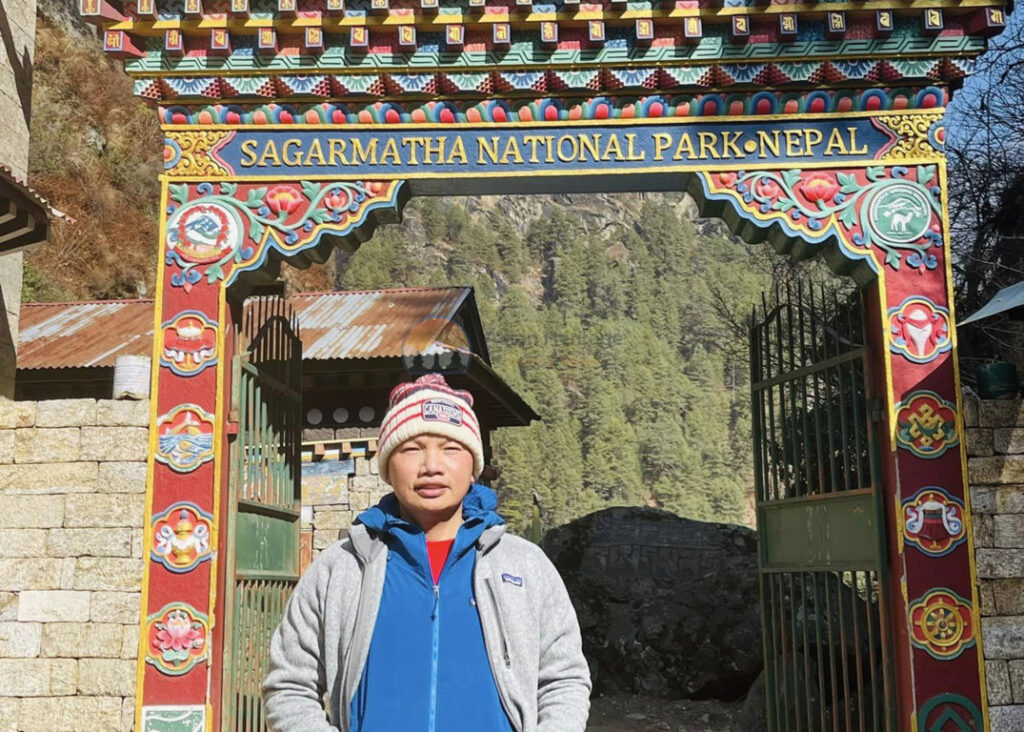
Local Markets and Handicrafts:
Phakding is home to small local markets where trekkers can find souvenirs, traditional handicrafts, and local products. It’s an opportunity to support the local economy and bring back unique mementos of the Himalayan region.
Tranquility and Serenity:
One of the greatest highlights of Phakding is its tranquil atmosphere. Away from the bustling towns and cities, Phakding offers a peaceful retreat amidst nature’s splendor. The serenity of the surroundings allows trekkers to disconnect from the outside world, recharge their spirits, and find solace in the Himalayan wilderness.
Phakding, with its natural beauty, cultural richness, and strategic location, presents an unforgettable experience for trekkers and adventurers. It encapsulates the essence of the Everest region and sets the tone for an incredible journey to the majestic Everest Base Camp and beyond.
Weather in Phakding by month
January:
January is winter in Phakding, and the weather is cold with temperatures ranging from -10°C (14°F) to 5°C (41°F). The days are generally clear, but there may be occasional snowfall. It’s important to pack warm clothing and be prepared for chilly conditions.
Also Check: All about Trekking Junction, Besisahar
February:
Similar to January, February is also a cold month in Phakding. Temperatures range from -5°C (23°F) to 7°C (45°F), and there may still be occasional snowfall. It’s essential to have proper winter gear and be cautious of icy trails.
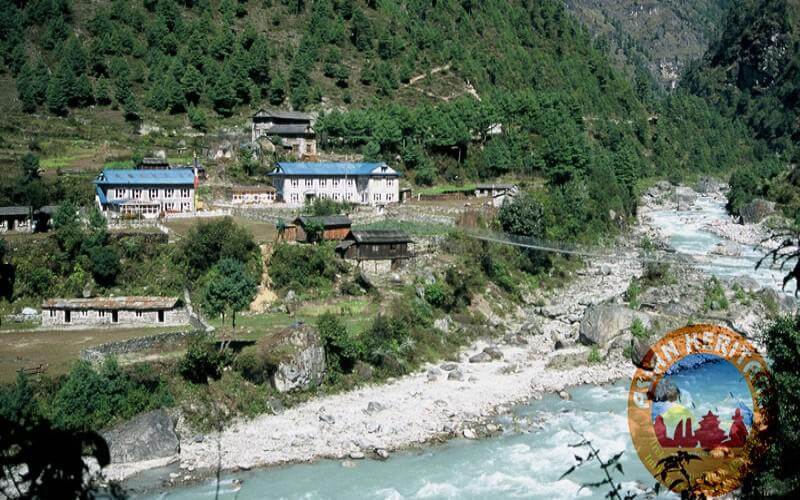
March:
March marks the transition from winter to spring in Phakding. The temperatures begin to rise, ranging from -2°C (28°F) to 10°C (50°F). The days become longer, and the weather is generally dry and sunny. It’s still advisable to carry warm clothing, especially for higher elevations.
April:
April is a beautiful time to visit Phakding as spring is in full swing. The temperatures continue to rise, ranging from 2°C (36°F) to 14°C (57°F). The days are generally clear, but occasional showers may occur. The landscapes come alive with blooming flowers and lush greenery.
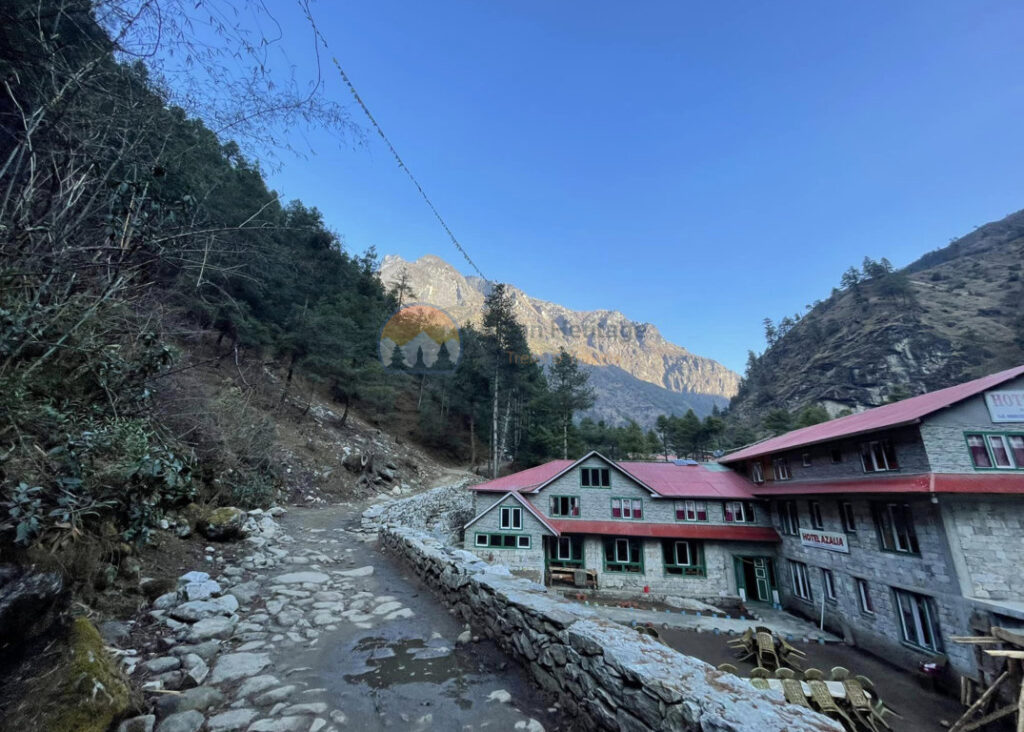
May:
May is a popular month for trekking in Phakding. The temperatures range from 6°C (43°F) to 18°C (64°F). The weather is generally pleasant, with clear skies and longer daylight hours. It’s a great time to enjoy the stunning views and comfortable trekking conditions.
June:
June marks the beginning of the monsoon season in Phakding. The temperatures range from 8°C (46°F) to 20°C (68°F). The region experiences regular rainfall, and the trails can be muddy and slippery. It’s important to be prepared for wet conditions and carry proper rain gear.
July:
July is the monsoon season in full swing in Phakding. The temperatures range from 10°C (50°F) to 21°C (70°F), and rainfall is frequent. The trails can be challenging due to slippery conditions and reduced visibility. Trekkers should exercise caution and plan their trips accordingly.

August:
Similar to July, August experiences heavy rainfall in Phakding. Temperatures range from 10°C (50°F) to 20°C (68°F). The monsoon showers continue, and the trails can be challenging. Trekkers should be prepared for wet conditions and plan their itineraries carefully.
September:
September marks the end of the monsoon season in Phakding. The temperatures range from 8°C (46°F) to 19°C (66°F). The rainfall gradually decreases, and the weather begins to stabilize. The landscapes are refreshed and vibrant, making it a great time to trek.
October:
October is one of the best months to visit Phakding. The temperatures range from 4°C (39°F) to 16°C (61°F). The weather is generally clear, with mild temperatures and stunning mountain views. The trails are less crowded, and the overall trekking experience is enjoyable.
More: Chukhung Valley, Everything you need to Know
November:
November is another popular month for trekking in Phakding. Temperatures range from -1°C (30°F) to 11°C (52°F). The skies are generally clear, and the weather remains pleasant. Trekkers can enjoy stunning views of the mountains and comfortable trekking conditions.
December:
December marks the onset of winter in Phakding. The temperatures start from -6°C (21°F).
Conclusion
Phakding serves as an ideal starting point for trekkers seeking to explore the breathtaking beauty of the Everest region. With its moderate elevation, awe-inspiring landscapes, and rich cultural heritage, Phakding offers an unforgettable experience for adventurers. From Phakding, trekkers can embark on a journey that takes them through picturesque valleys, across suspension bridges, and up challenging trails, all while being immersed in the vibrant Sherpa culture.
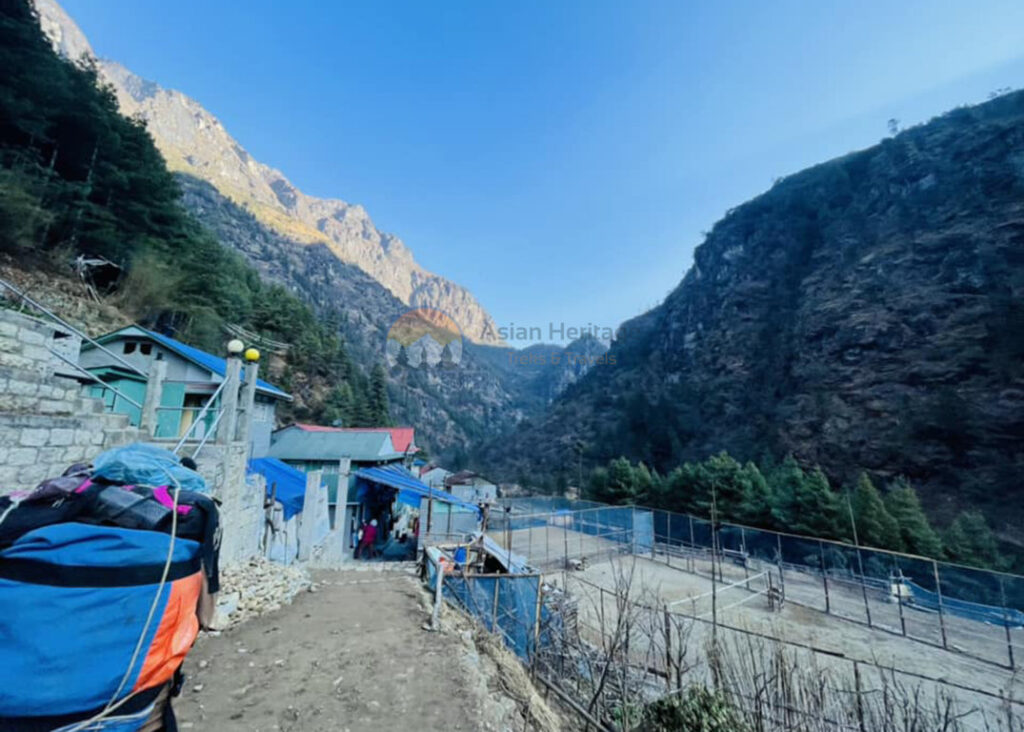
Whether it’s the thrilling trek to Namche Bazaar, the vibrant heart of the region, or the shorter journeys to Lukla or Monjo, each route from Phakding showcases the natural splendor of the Himalayas. The distances covered may vary, but the beauty and serenity of the surroundings remain constant.

As trekkers make their way from Phakding to Namche Bazaar, they not only witness the stunning mountain vistas but also get a taste of Sherpa’s hospitality. Namche Bazaar’s vibrant markets, tea houses, and cultural sites provide an opportunity to rest, acclimatize, and soak in the unique atmosphere before continuing the journey to higher altitudes.
Phakding to Lukla
The trek from Phakding to Lukla offers trekkers a chance to experience the thrill of landing at Tenzing-Hillary Airport. Along the way, they traverse through dense forests, pass traditional Sherpa villages, and enjoy panoramic views of the Dudh Kosi River, creating an unforgettable adventure.

For those venturing toward Monjo, the trek showcases the natural beauty of the Sagarmatha National Park. Trekkers are treated to lush vegetation, majestic waterfalls, and a chance to spot local wildlife. Monjo serves as a checkpoint for obtaining permits and marks the gateway to the national park, where the true Himalayan wilderness awaits.
Starting point Everest base camp
While Phakding itself is a small village, its significance as the starting point for the Everest Base Camp trek cannot be overstated. Trekkers from all over the world begin their epic journey here, following in the footsteps of legendary mountaineers. From Phakding, the trail winds through various stunning landscapes, challenging terrains, and mesmerizing landmarks, culminating in the awe-inspiring Everest Base Camp, nestled beneath the towering peaks of the Himalayas.
In addition to its natural wonders, Phakding provides a glimpse into the rich Sherpa culture. The local community embraces their ancient traditions, seen in the intricately decorated monasteries, prayer flags fluttering in the wind, and warm smiles that greet visitors. Sharing meals with the Sherpa people, learning about their customs, and participating in their festivals can be a truly enriching experience.
In conclusion, Phakding serves as an enchanting introduction to the wonders of the Everest region. Its moderate elevation, captivating landscapes, and Sherpa culture make it an ideal starting point for trekkers embarking on the Everest Base Camp journey. Whether you’re seeking adventure, natural beauty, or cultural immersion, Phakding offers it all, setting the stage for an unforgettable trek in the majestic Himalayas.
Let our expert team at Asian Heritage Treks and Travel take care of everything — from guided tours to personalized packing tips and travel arrangements.
Plan a fun adventure







